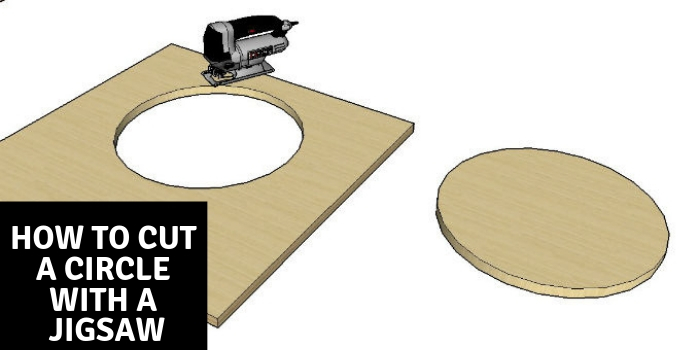
Usually, cutting perfectly circular holes is very difficult to do using power tools. With a jigsaw and a bit of prep work, though, you’ll find that cutting circles can be an incredibly satisfying experience.
A jigsaw is one of the few tools that you can use to cut out perfect circles or semi-circles and is really what the tool was made for.
What Do You Need To Cut Out A Circle With A Jigsaw?
The first tools you will need to look at is what type of jigsaw blade you are going to be using and some work better than others. Your ideal jigsaw blade for this type of cut is really a scrolling jigsaw blade, for the most part but other blades can be used and the thinner, the better usually.
Other jigsaw blades that tend to be thicker and more rigid are geared more towards making straighter cuts efficiently – their stiffer body and aggressive teeth make them a poor match for making neat circular cuts, especially when making smaller circles or openings.
Whether you are using a circular cut jig or doing it freehand, you will need a way to make a perfectly round cutting line. You can mark out accurate circles using a beam compass, standard compass, a template or a trammel head with a pencil on one end. There are many different tools you can use from more elaborate drafting type of tools to some really basic ones like a string, a pencil and a pushpin.
A guide can also be used with your jigsaw to give you the best and most accurate results, if needed. These can be made or purchased and can really be a good investment if you are planning on making a lot of circles.
How To Cut A Circular Internal Cut-Out?
As with almost all jigsaw cuts you do, you want to start by marking the cutting line. Use the beam compass or trammel head to mark the circular cutting line. When making the line, keep in mind that the waste side is often inside the circle – make sure to leave enough room for finishing later.
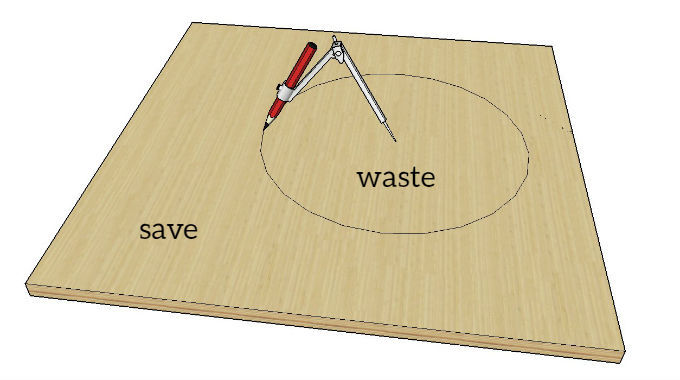
Don’t forget to mark the center of the circle, too, especially if you’re using a circular template instead of a compass or trammel head.
It’s always a good idea to check the blade for squareness before making the cut. Take a speed square and check that the blade is straight down vertical and square with the shoe. A bent blade will not do your cut any favors – replace the blade as needed.
Depending on the material, you may be able to start the cut on the outside edge of the workpiece in some cases. As an alternative, you can drill a starter hole instead, which is probably a better idea if you're making cutouts like this. When drilling a pilot hole, make sure to use a drill bit large enough to make a hole that your jigsaw blade can fit into.
Make sure to drill a starter hole inside the cutting line and just touching it.
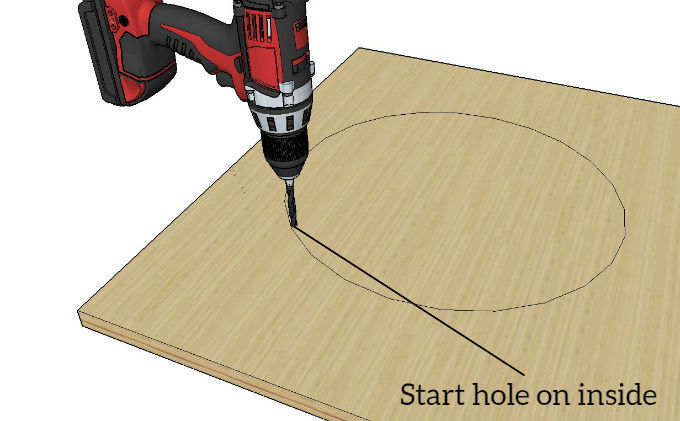
At this point, you can start cutting away at the cutting line freehand. Make sure that the shoe is fully in contact with the surface of the work piece, and focus on following the cutting line – let the blade action do the work for you.
TIP!
For extra perfect circles, you can also install a circular cutting guide. To add a guide to your jigsaw, latch the beam of your guide to the jigsaw’s shoe.
Just before you make the cut, secure the pivot point of the guide to the center of the circle, making sure that the radius of the guide is accurately set to follow the cutting line you placed down earlier.
Whichever method you choose, carefully place the blade inside the starter hole and let it run up to speed before easing it gently into the material. Keep the speed steady and consistent throughout the cut.
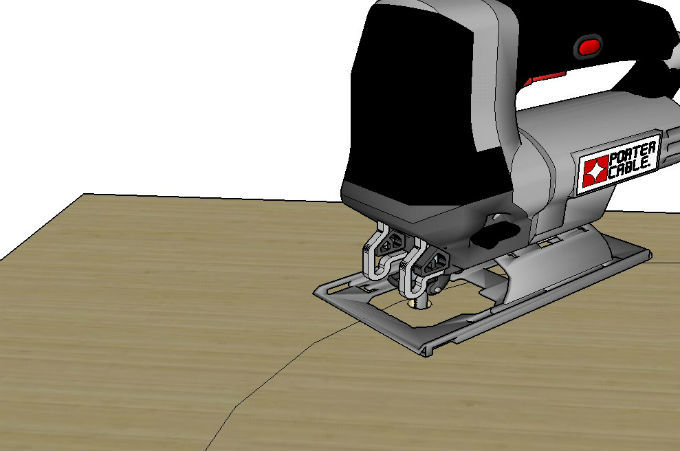
Keep making your way around the edge of the outline until you have completely cut the circle out. You can also opt to sand the edges for a more finished look and feel if you want to and reshaping is also possible with sanding to get it more uniform as well.
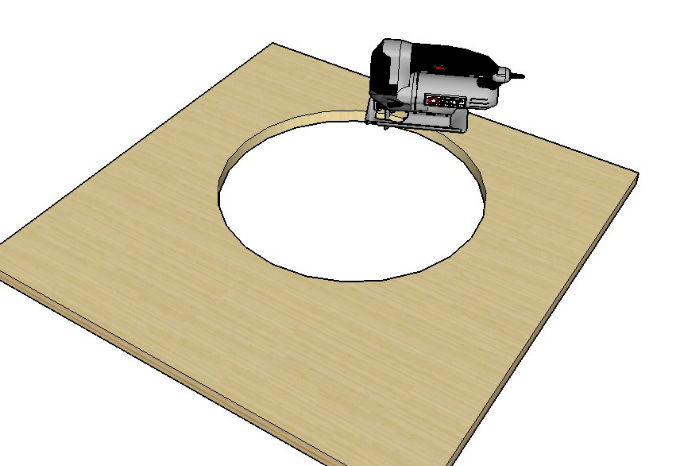
How to Cut Out Circles With a Jigsaw
Sometimes, you want a circular piece of material instead of a circular hole. In this case, the procedure is still very much the same, except that the waste side is now outside of the circle, instead of inside it.
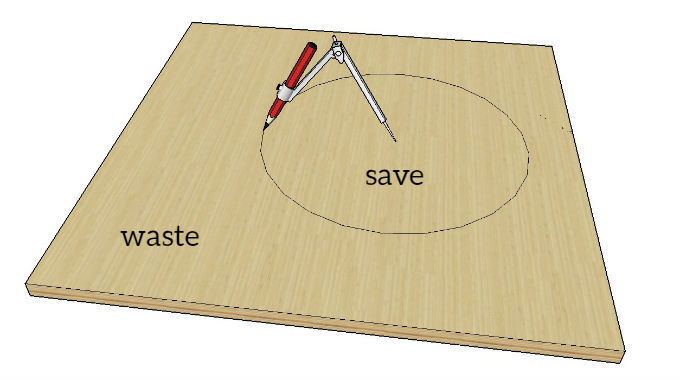
If you are using a starter hole, make sure to drill it outside the cutting line instead, again with a drill bit large enough to make a hole that will accommodate the jigsaw blade.
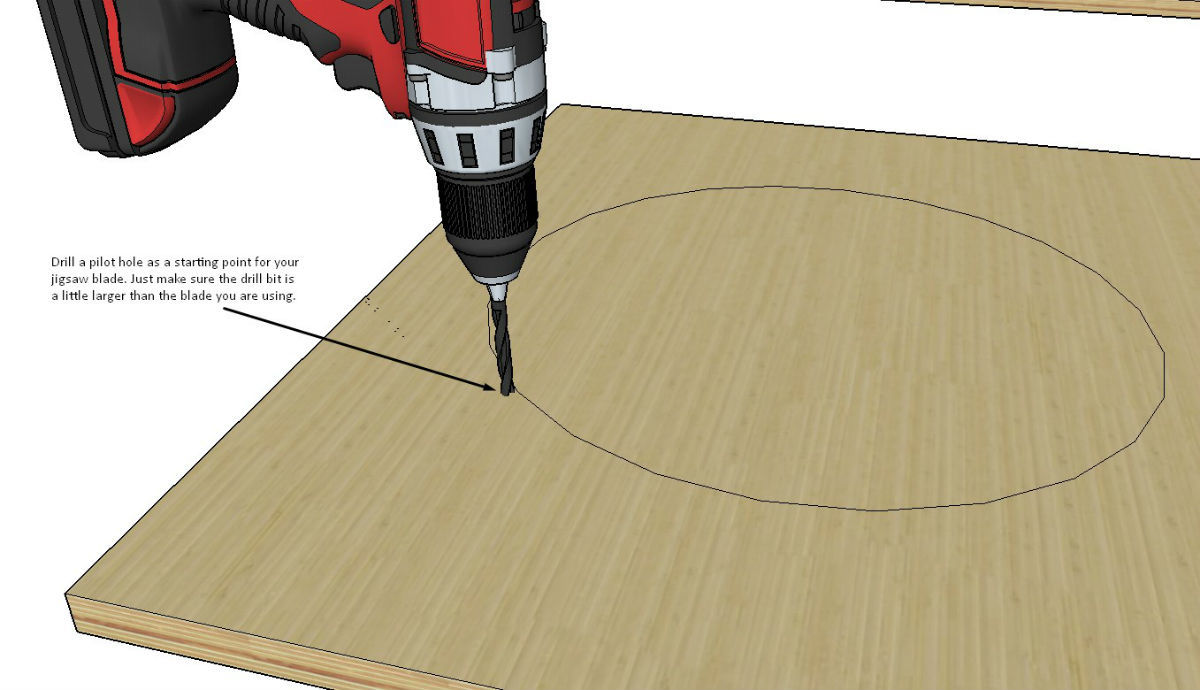
Starting With A Pilot Hole
TIP!
If you are working with thinner materials, you can save some time by stacking up several work pieces at once and clamping them securely. This way, one circular cut will net you several circular pieces to work with in just one go.
When working with several pieces at once, or with a particularly thick piece, make sure that the starter hole that you drill goes all the way through, with the jigsaw blade being able to fit easily.
Keep making your way around until you have the cutout piece that you need. It would be a good idea to prop up the cutout so it doesn't lean prematurely and pinch the blade.
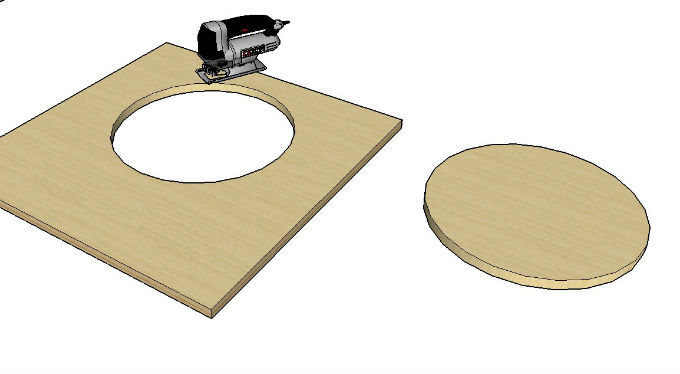
How to Cut Small Circles With a Jigsaw
A jigsaw blade can only turn so much, especially if you are using a thicker, sturdier blade for cutting into a thicker wood board. Forcing the jigsaw into a tight turn can cause you to veer off the cutting line, or worse, snap the blade right off.
To cut out small circles too small for the turning radius of your jigsaw, you can make the job easier by making relief cuts first.
To make relief cuts, first do a series of straight cuts from near the edge of the cutting line, across the center, and almost to the opposite edge. The more relief cuts you prepare, the easier it is for the jigsaw to cut through the tighter curves piecemeal.
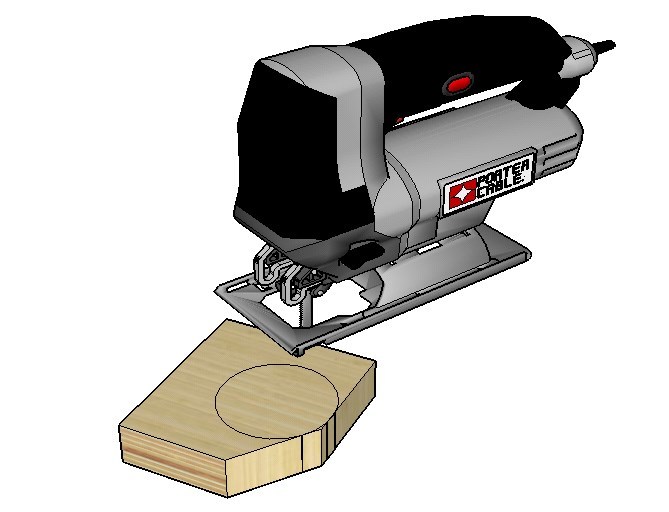
Make sure that the relief cuts do not extend past the cutting line. To be safe, leave a bit of allowance between the end of the relief cut and the edge of the circle.
Do this all the way around the circle first so you have something that look like the image shown below...
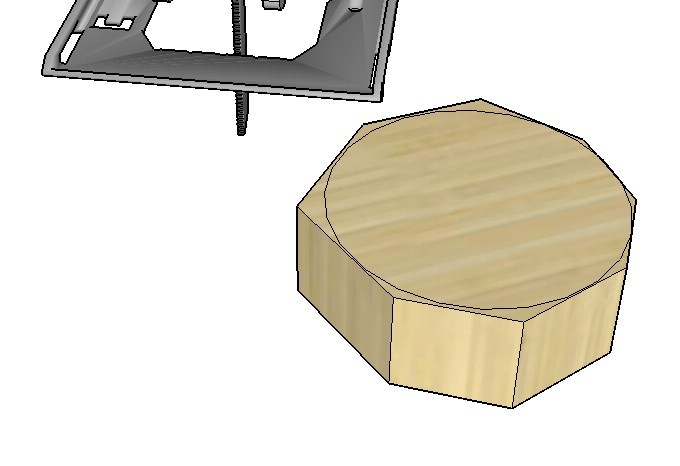
Now you can finish off the shape by trimming the remaining lines and the jigsaw should easily be able to handle this type of radius a lot easier. Sanding afterwards can make the circle much more uniform and consistent, if you need it to be.

